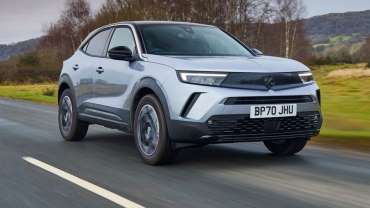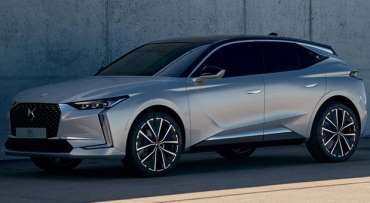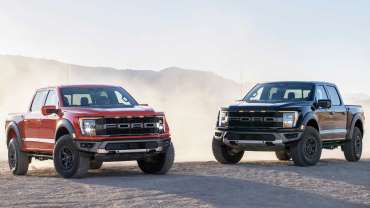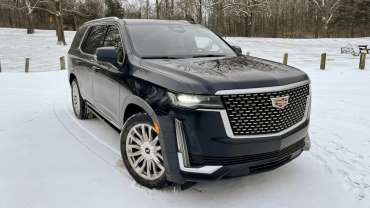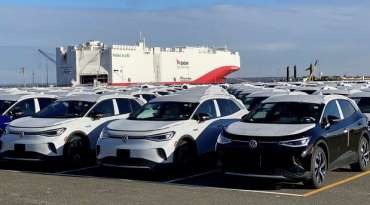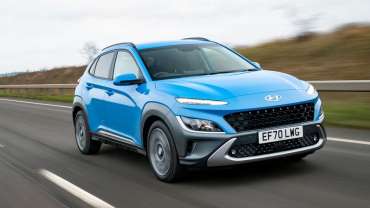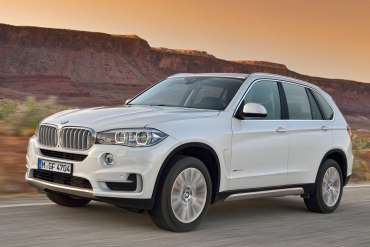
Worldcarblog.com
Vauxhall Mokka (2021) review: the ultimate glow-up
Your eyes don’t deceive you: this really is the new Vauxhall Mokka. We, frankly, didn’t quite believe Opel/Vauxhall design boss Mark Adams when he said that the GTX Experimental concept was a preview to this all-new crossover, built from the ground up using PSA platforms and technology.
Woah, what a change!
Definitely. Gone is the fuddy-duddy and dumpy looks of the Mokka’s predecessor, replaced with an all new and thoroughly modern look from Mark Adams and Co. The all-new Mokka is the start of a new design language from Vauxhall, with the new ‘Vizor’ front panel on the exterior, chunky wheelarches and sharp lines.

Inside, there’s a design revolution, too – going beyond even the new Corsa in terms of modernisation. It’s all part of Mark’s ‘Pure Panel’ mantra – keeping fuss to a minimum, and designing a dashboard that looks like it flows the digital instruments and central touchscreen in one. Other details include a super-minimalist shifter for the automatic gearbox versions, a lot like VW Group’s efforts with the latest Golf and A3.
Our SRi Nav Premium test car had supportive seats, with thick side bolstering and a kitch pattern on them. There’s ample adjustment in the driver’s seat, with allowance for drivers (like me) to whump it to the floor like a touring car driver. Material quality is good, with chunky indicator stalks and familiar PSA switchgear dotted around. The central touchscreen uses the much maligned PSA software, but arguably seemed to run faster here than previous experiences. Still, the digital instruments (seven inches on lower-end trims, 10 on higher) are clean and easy to digest, and come with varying layouts to suit you.
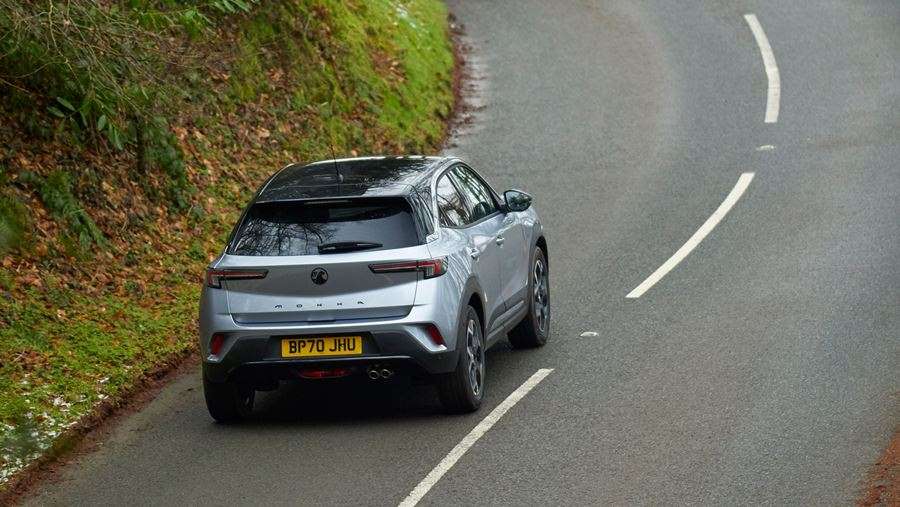
The only fly in the interior ointment is the rear space – tall adults might suffer sitting behind an equally tall driver in terms of legroom, but will have plenty of headroom. Boot space is rated at 350 litres, which is fine and adjusted with a movable boot floor, but the Mokka doesn’t excel here when up against myriad crossover rivals.
What engines can you get?
Vauxhall offers two 1.2-litre turbocharged petrol engines (99bhp and 127bhp – the latter available with an eight-speed auto) and a 1.5-litre diesel. Along with the combustion engine versions, Vauxhall offers the Mokka e, an EV with a 50kWh battery and 134bhp. We tested the 127bhp petrol with an eight-speed auto.
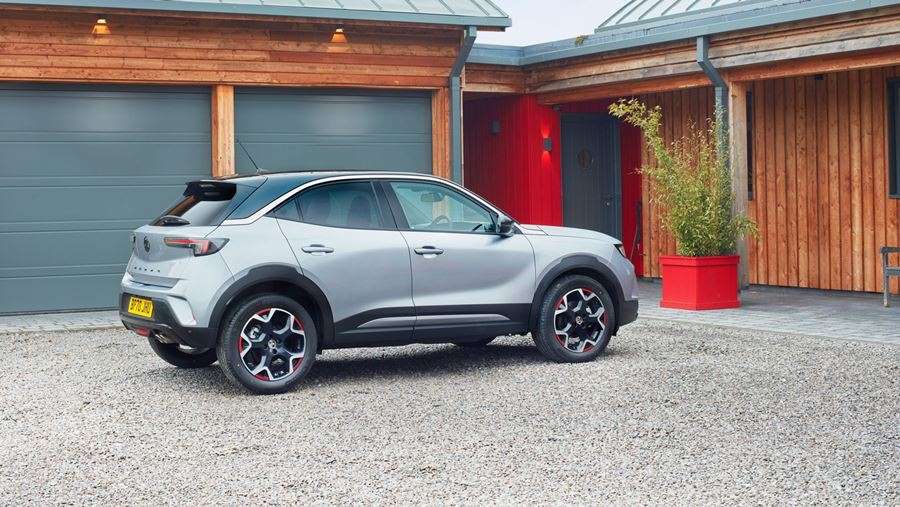
It’s arguably all familiar territory to those who have tried the latest Corsa, or Peugeot’s 208/2008 or Citroen’s C3 and C3 Aircross. The engine has a properly characterful gargly three-cylinder engine note and can get out of its own way, too.
When mated to the eight-speed auto, shifts are smooth in auto and can be controlled by pressing the ‘M’ button on the shifter – the new Mokka comes with wheel-mounted shift paddles. They’re a tad plasticky in feel but they manage not to surprise the auto ‘box when a shift is requested, so there’s little to no lurching when you want a different gear.
What about the Mokka’s handling?
If you’ve not read our Mokka e review already, I’d say that model is fractionally more comfortable in terms of ride quality. There’s an additional softness to the way it rides over lumps and ruts that is missing with the combustion engine Mokka variants. Still, damping is impressive no matter what variant you go for – while it may jitter over lumps a tad more than the Mokka e, the Mokka in general is still a better compromise than the ‘sporty’ Puma and downright irritating Juke.
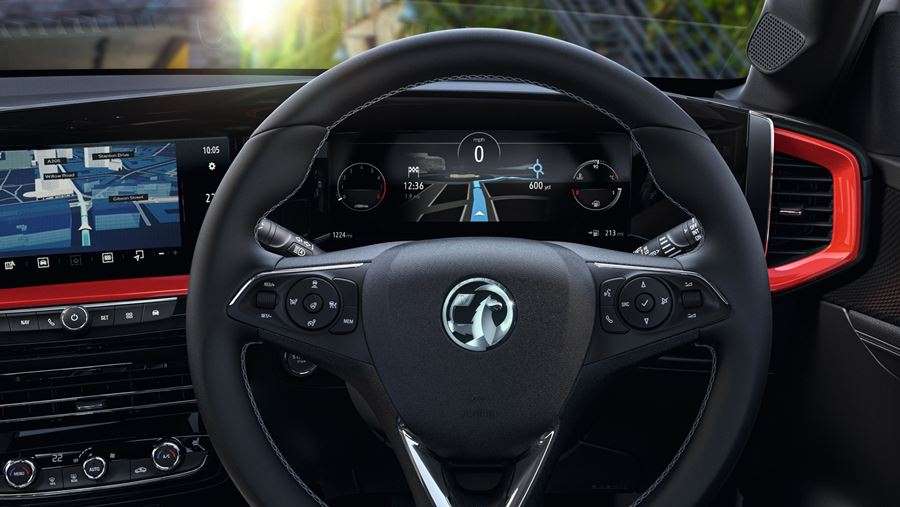
As for overall handling, it’s a sweet blend. Opel/Vauxhall’s engineers have clearly been busy tweaking their own geometry for the steering, adding in welcome weight to the usual PSA’s excessively light steering. It’s the Mokka’s supremely light kerbweight here that does it some favours for keen drivers, with excellent body control and grip available if the moment takes you. Even with the automatic, flicking the drive mode into Sport mode and getting aggressive with your steering inputs… the Mokka is right there with you, ready for action.
Vauxhall Mokka: verdict
Comparing this new Mokka to its predecessor would be a low bar, in reality; the drab looks, dated interior and stodgy drive of the old one is nowhere to be seen here. No, while this new Mokka isn’t perfect – particularly in terms of practicality – we can comfortably say it’s now a small crossover worth looking at. I’d chalk that up as a result for Vauxhall.
Source: carmagazine.co.uk
DS, Lancia and Alfa Romeo will work together to develop a new generation of cars
According to some media, three premium brands in the structure of the new Stellantis group - DS, Lancia and Alfa Romeo, will cooperate in the joint development of the new generation of cars that will be presented in 2024.
DS's product director confirmed that the three brands will receive propulsion systems and technologies that will not be available in other Stellantis models.
"We are working with our Italian colleagues on specific premium models, drives and features to distinguish premium brands from major brands," Marion David told Automotive News.
The models that Lancia, Alfa Romeo and DS have specially planned for the next few years will be developed and offered to the market. The next generation of cars, however, will unleash the full potential for synergy within the newly formed company.
"Cars that are already in development will be launched," says David. "And then for the next generation, we're focused on creating synergies that are the reason for the merger."
The Empire Strikes Back - Ford is the new model F-150 Raptor
While the rest of the world still sees pickup trucks as "prehistoric" work vehicles whose sole purpose is to do work on farms or construction sites, Americans have long found a way to make them civilized enough to be in every garage "across the pond." parked one copy.
The trend actually began in the late 1970s when pickups first received identical equipment from passenger cars, so American buyers quickly realized that they could use such vehicles for transportation to the office on weekdays and then for small chores around the house or weekend fun.
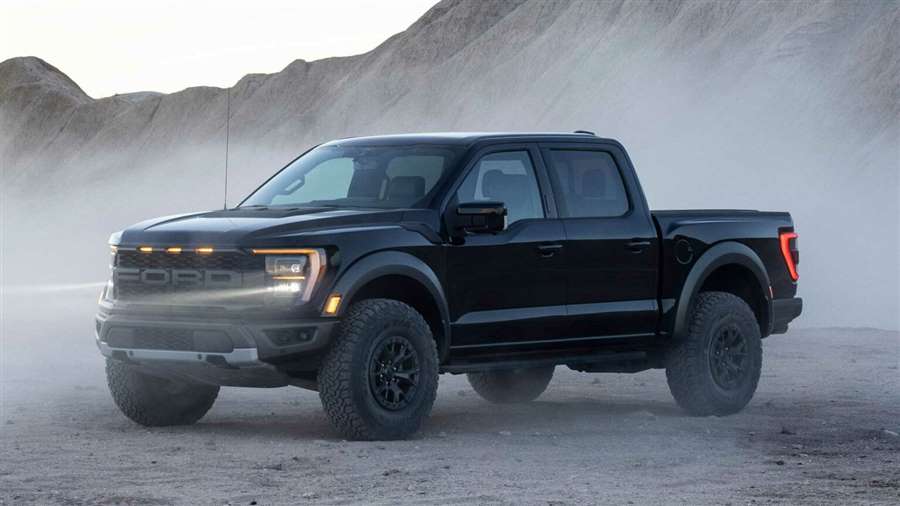
During the nineties, the trend spread to high-performance street racers, but no one dared to make an extreme SUV that will be able to compete on the world's largest "off-road" tracks. And then, in 2008, Ford debuted with the release of the Raptor bestseller F-150 and once again changed the way the "Yankees" see pickups.
There really was no such extreme racer in that period, and how good the Raptor is is perhaps best confirmed by the fact that one of the series finished second in the very demanding Baja 1000 race, which is considered the second biggest field competition after the Dakar Rally.
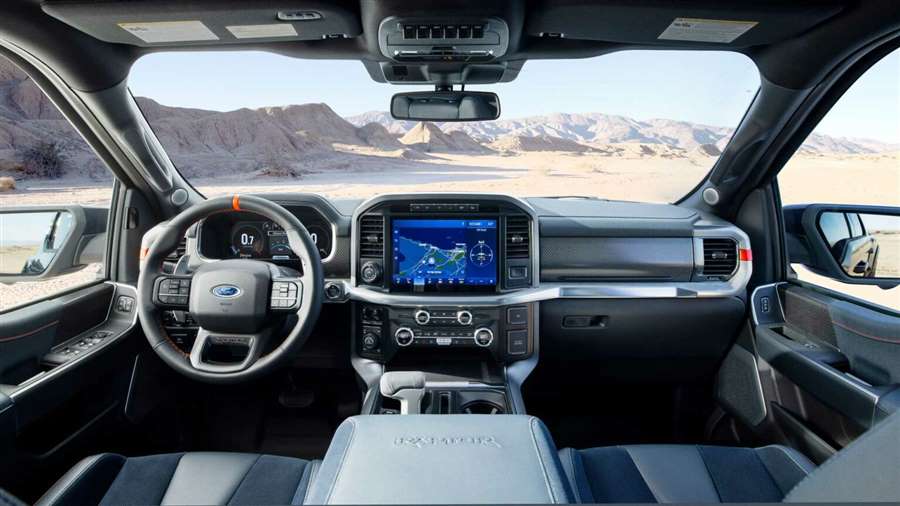
Ford will say it has sold more Raptors in the last twelve years than Chevrolet has delivered units of the Corvette sports model. Although at first glance these two vehicles have nothing in common, their price is almost identical, so they attract customers with an equally deep pocket.
The Raptor also now has competition and a look at the Ram 1500 TRX from Fiat-Chrysler Corporation, whose 702 horsepower looks impressive in addition to Ford's "only" 450 "throats". The second largest American manufacturer is now arriving with the new Raptor and wants to be in the spotlight again.
At first glance, the novelty still doesn’t seem to match the TRX, but Ford assures us that it doesn’t all lie in raw figures such as engine power and acceleration from standstill to 100 km / h in the direction. For starters, the company says that mass is the biggest enemy of high performance, so the solution is not to add strength but to reduce the weight of the truck. And the Raptor definitely delights in that category as it weighs "only" 2,475 kilograms.
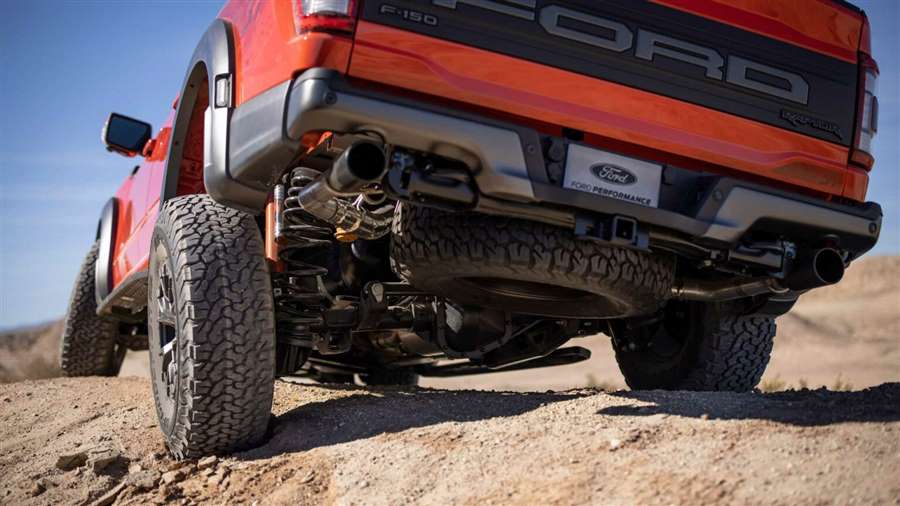
We say "only" because the stated figure is as much as 400 "kilos" lower compared to the Rama thanks to the aluminum construction of the chassis and shell. Perhaps such a figure still seems insignificant, but for vehicles that spend a lot of time "in the air", every gram is worth paying attention to.
The Raptor is not only significantly lighter than the TRX but also dominates in terms of ground clearance. For example, the Raptor boasts 37-inch tires, while those on the TRX are "only" 35-inch. Ford is also better in terms of overall ground clearance (38.1 by 35.5 centimeters) and has developed a suspension to be able to withstand the effort at greater angles. Translated into a simpler language, if you find yourself on difficult terrain from which you need to get out with a slower and planned ride - the Raptor is still the king of its segment.

The category we expected the most detail about is the one where Ford has yet to release information. It is, of course, an engine. The Raptor has in the past provided a 3.5-liter with 450 horsepower, which is significantly less than the 6.2-liter petrol with 702 “heads” in the TRX. Ford has announced to us that the novelty will continue to be available only with a V6 engine, at least initially, but its power is still unknown. It is quite certain that the number will be higher than in the past and we can optimistically hope that it will approach the figure of approximately 500 "horses".
Ford also said that the Raptor R with a V8 engine will arrive next year, and we are quite sure that it is a 5.2-liter model from the Mustang Shelby GT500 with 760 horsepower. In all cases, power is transmitted to all four wheels via a ten-speed automatic transmission.
We will mention another very interesting detail, and that is adjusting the driving style. We have already seen some of the regimes from them, such as Normal and Sport, while Baja serves to storm at high speeds through the desert parts of the American federal states of Arizona or Nevada.
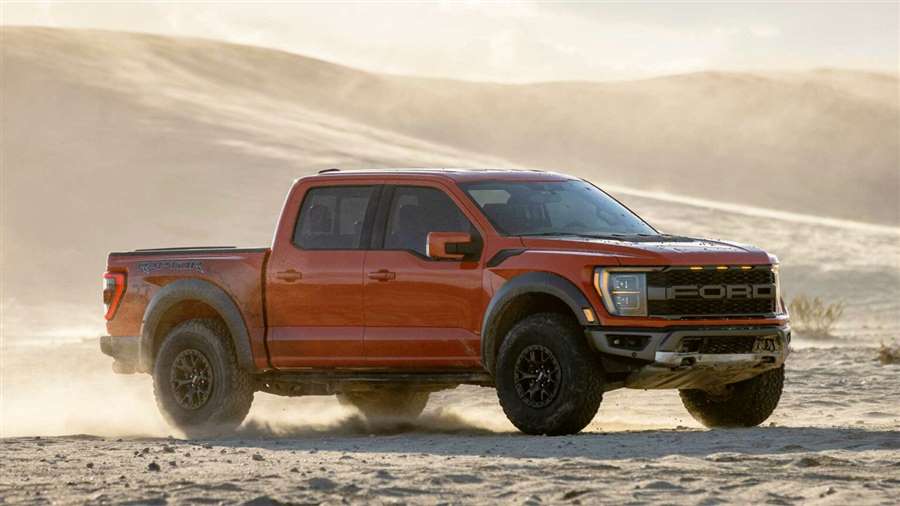
But what is completely new is the so-called "Quiet" regime, or literally "Silence". It allows the Raptor to become even more civilized and not wake up your neighbors if you come home late in the evening or early morning.
The design changes are as we expected. Although the Raptor may look like a standard F-150, the two vehicles actually share only a roof and headlights. Every other stylish part was developed especially for the SUV and we will easily recognize it by aggressive details such as the radiator grille and hood. The interior and equipment have not changed significantly, so we recommend that you read the earlier edition of the new fourteenth generation, where we described in detail what new technology the F-150 brings.
In any case, production will start in the summer, and the new Raptor will arrive in showrooms in October.
2021 Cadillac Escalade Diesel First Drive Review: The Power of Choice
Gasoline or diesel? In the new Escalade, there’s no wrong way to go.
Here's the good news for full-size luxury SUV buyers: Not only does the 2021 Cadillac Escalade diesel drive nearly identically to the excellent, gasoline-chugging model, it also costs the exact same amount, is just as impressive inside, and gets notably better fuel economy. The bad news? Well, there isn't any, unless you're a hardcore V-8 partisan.
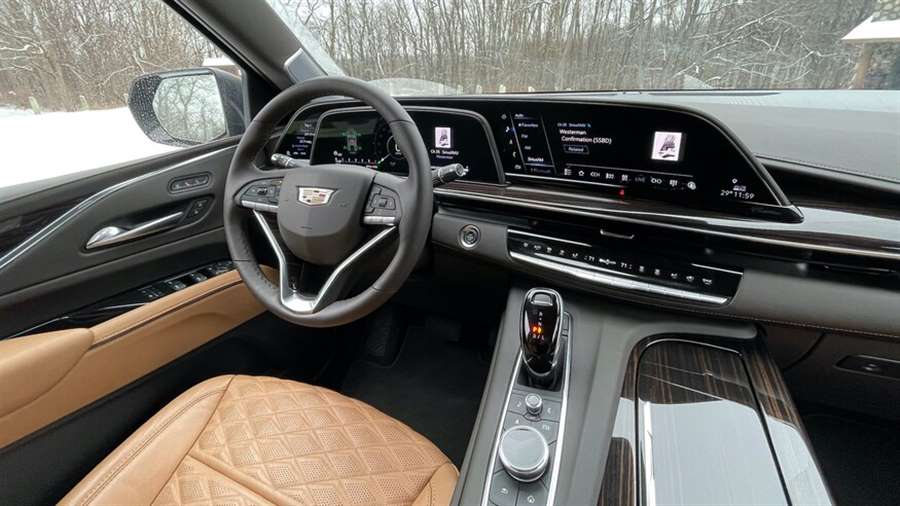
Added as part of the Escalade's wholesale redesign for 2021, the diesel version lacks the gasoline model's ferocious growl under full-bore acceleration, as well as its mid-range and top-end muscle during freeway-speed passing maneuvers. But the diesel delivers in virtually all other circumstances. In terms of output, here's how they stack up: The gas V-8 churns out 420 horsepower and 460 lb-ft of torque, while the Duramax inline six-cylinder turbodiesel is rated for 277 hp and an equal 460 lb-ft.
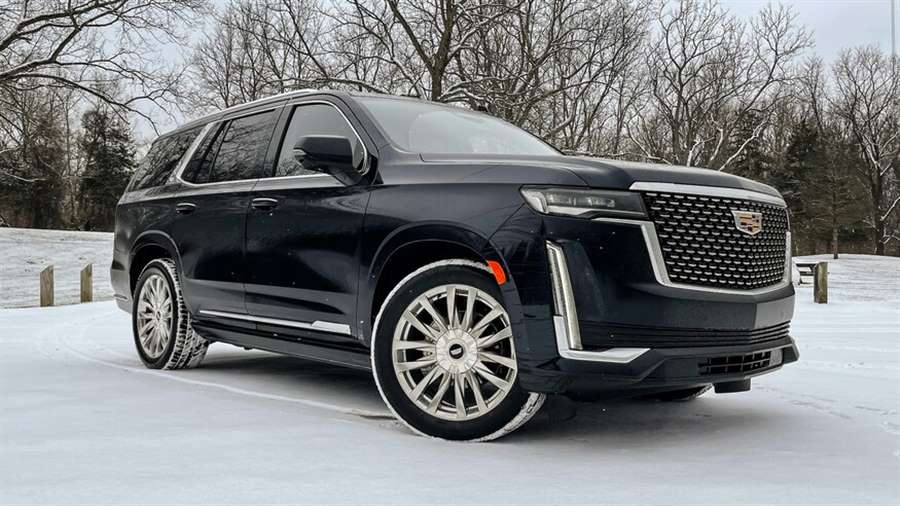
Striking Similarities
After punching the diesel's ignition button, the first thing we noticed was the massive, bladder-busting 560 miles of range indicated in the gorgeous OLED digital instrument panel—note we didn't say "diesel clatter." Sure, anyone attuned to diesels will be able to pick up the telltale cues, but the smooth Duramax is quiet and refined enough to go undetected by most. Under acceleration, it's a bit gruffer in tone than the V-8, but those who have owned or spent time in European diesel SUVs from, say, Audi or Mercedes won't bat an eye.
The 2021 Cadillac Escalade diesel, which is visually separated only by the "600D" badge on its liftgate and a lower redline on its digital tachometer, pulls away smartly from a stop, its 10-speed automatic shuffling through gear ratios completely invisibly. We recently tested the mechanically similar but longer-wheelbase Chevy Suburban with this same diesel engine, and it chuffed its way to 60 mph in 8.5 seconds; figure this Escalade to register a time in the same neighborhood given comparable curb weights. The Caddy isn't a scorcher, but neither does it ever feel slow.
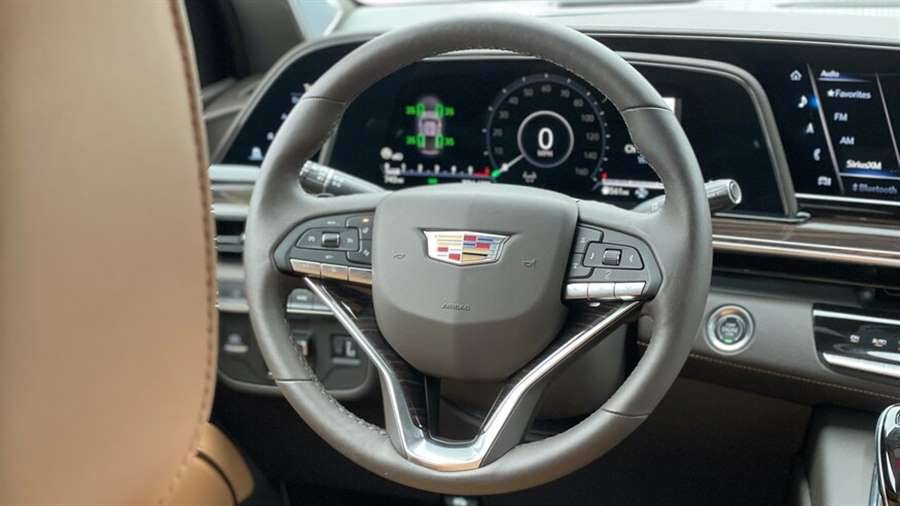
How The Diesel Drives
The new Escalade's refined and fine-driving chassis is here, too, with linear and accurate steering that allows easy placement in parking lots and on freeways, back roads, and everywhere in between. The suspension on our example had the optional magnetorheological dampers, and it rode as smooth as you can reasonably expect given the Escalade's body-on-frame construction, ginormous 22-inch wheels, and the atrocious quality of Michigan roads we tested it on. They remain devoid of feel regardless of engine, but the brakes are predictable and well up to the task of slowing down such a hefty boy, though we have yet to test their efficacy with a trailer strapped to the back of the Caddy.
The maximum tow ratings are basically aligned between diesel and gas Escalades—sensing a theme yet?—with the diesel rated to pull 7,800 pounds with four-wheel drive and 8,000 pounds with rear-wheel drive. Those numbers are 200 pounds shy of the V-8's due to the overall mass differences between the powertrains; the diesel is about 190 pounds heavier than the V-8 when accounting for all accessories, such as the diesel exhaust-treatment system. Even so, frequent luggers may want to opt for the Duramax, whose maximum torque is available at just 1,500 rpm versus the 6.2-liter's 4,100 rpm.
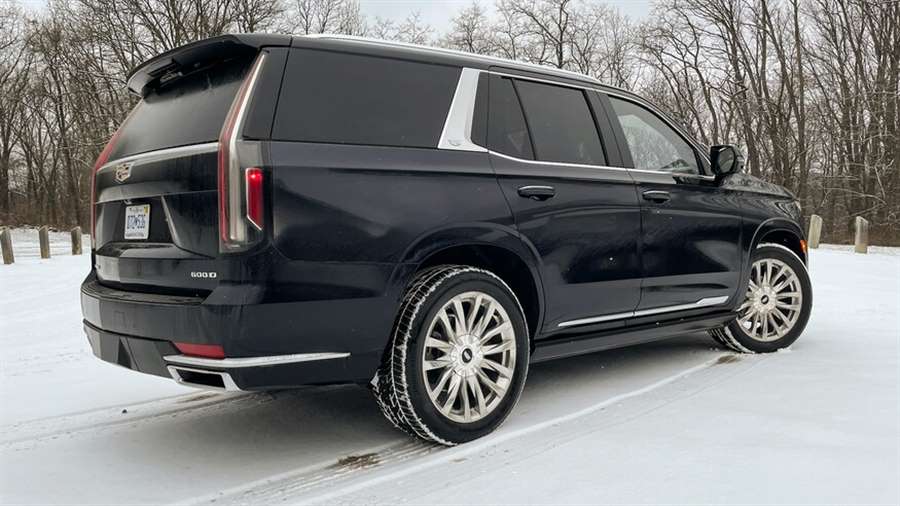
Everything That's Great About The Escalade
Like other 2021 Escalades, the diesel model is stuffed with hugely luxurious and technology-rich innards. There's the trio of highly impressive OLED screens placed in front of the driver, with a touch-sensitive trip and driver's info readout to the left of the steering wheel, a configurable instrument panel, and a sweeping central infotainment touchscreen. The software is quick to respond and gorgeously rendered, and we love the fact automakers are starting to install screens in shapes that complement a vehicle's interior aesthetic. The Escalade's approach mitigates what could be an overwhelming digital experience.
Instead, the experience is rich, the decadent cabin slathered with wood, metal accents, and supple leather upholstery. This particular diesel Escalade was delivered with the $2,000 Brandy and Very Dark Atmosphere interior option—that's caramel brown and dark gray for those who don't speak "pretentious"—that also adds stylish diamond stitching to the seats. There are a number of interior colors available, with a plethora of additional options for wood trim, stitch patterns, and more. The available $1,995 rear-entertainment system features large, high-resolution screens and tons of connectivity options, and we'd consider it a must if you anticipate frequently shuttling passengers. There were a few minor missteps—one or two wavy stitches/bits of piping, some parts-bin switchgear—but the 2021 Cadillac Escalade's cabin is quiet and comfortable, with the design and execution you'd expect to find in a six-figure vehicle.
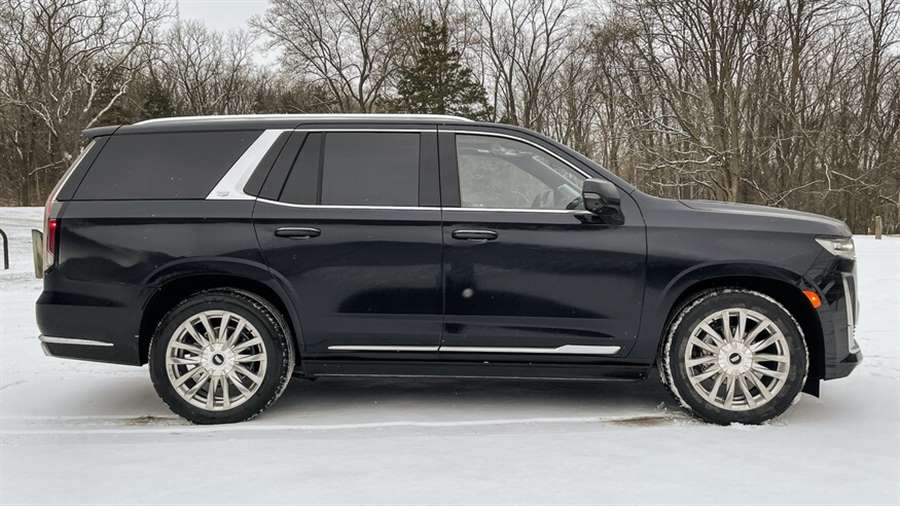
The Cost Of Excellence
And that's where the diesel-powered, short-wheelbase Premium Luxury 4WD model we drove landed: $104,910, with $17,620 worth of options factored in. We won't get into the value proposition of adding $1,750 in power-retracting side steps or the amazing-sounding $4,300 AKG audio system or any of the other goodies; if you're shopping for an Escalade, cost probably isn't a problem. That also means the financial implications of the Escalade diesel's fuel economy don't matter, either. But it's still nice that the Duramax returns 21 mpg city and 27 mpg highway with rear-drive, or 20/26 with four-wheel drive; those are up from 15/20 and 14/19 in the V-8 model.
Choosing which 2021 Cadillac Escalade engine is right for you is as much about what you plan to do with it than anything else. Tow or hit the highway a lot? Diesel. Strike a showy stance best augmented by the chest-thumping rumble of a V-8? Gasoline. Based on this initial experience, though, it's clear that whatever your choice, it won't be a wrong one.
Source: motortrend.com
Volkswagen wants to sell over 100,000 electric ID.4s in 2021
The first contingent of the ID.4 crossover set off on its way to its future owners in Europe, China and the United States.
The Volkswagen ID.4 is the second production model of the new generation of electric vehicles manufactured by Wolfsburg, after the ID.3 that broke the ice last year. Both cars are based on the MEB mechanical platform developed by VW specifically for electric vehicles.
According to B92, optimistic forecasts are coming from the German manufacturer that it should deliver over 100,000 copies of the ID.4 crossover to customers this year alone, although they have received only about 17,000 orders so far. The VW ID.4 is currently being produced at the Zwickau plant in Germany, as well as in China, and will soon start production in Emden (Germany) and, next year, in the Chattanooga factory (USA).
New Hyundai Kona 2021 review
The Hyundai Kona has been revised for 2021 and we find out just how much it's improved
The updates to the Hyundai Kona improve its overall experience, with an efficient and effective mild-hybrid powertrain, a more composed and comfortable ride, and some useful tech upgrades in the cabin. But these gains aren’t enough to shove the car to the front of the pack; the Kona still isn’t as good to drive as the best small SUVs, and it continues to lag behind the likes of the Renault Captur and Ford Puma on practicality.
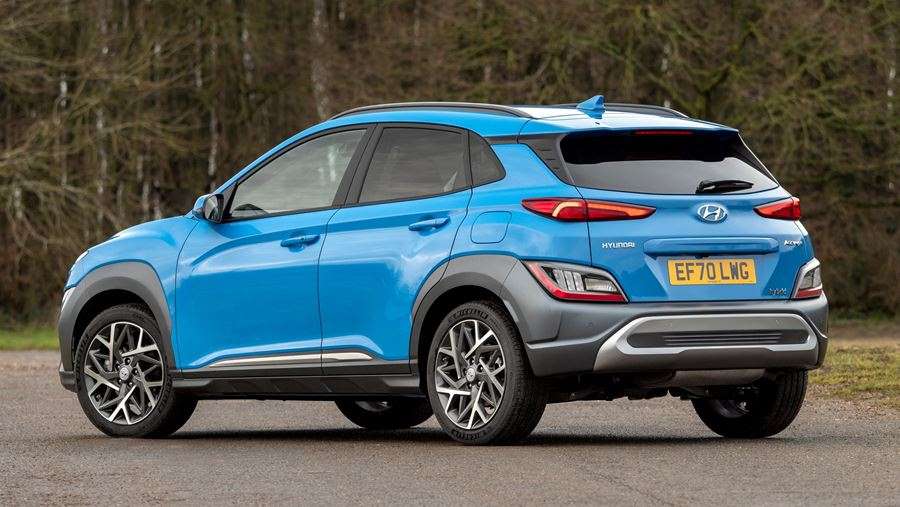
Hyundai will soon have an embarrassment of riches in the small SUV class. The Korean brand has a new offering, the Bayon, on the way in the coming months. And it will be joining a facelifted version of the Kona in the line-up.
Here, then, is the revised version of Hyundai’s ‘original’ small SUV. It’s had a little more than the typical mid-life nip and tuck too; yes, the usual updates like headlights and bumpers are present and correct, but there’s also a redesigned bonnet, and the changes are sufficient to make this car around 40mm longer overall than the outgoing version. The overall effect is to give the car a slightly more aggressive, chunky stance - perhaps even making it more of a crossover and less of a baby SUV. There’s also a new N Line trim level that tries to add a sporty look.
Under the bonnet, the Kona gets an updated range of engines. The 1.6-litre turbo unit at the top of the line-up gains some extra power, moving up to 195bhp, and the diesel motor (yes, here’s a car still available with one) gains a 48-volt mild-hybrid system.
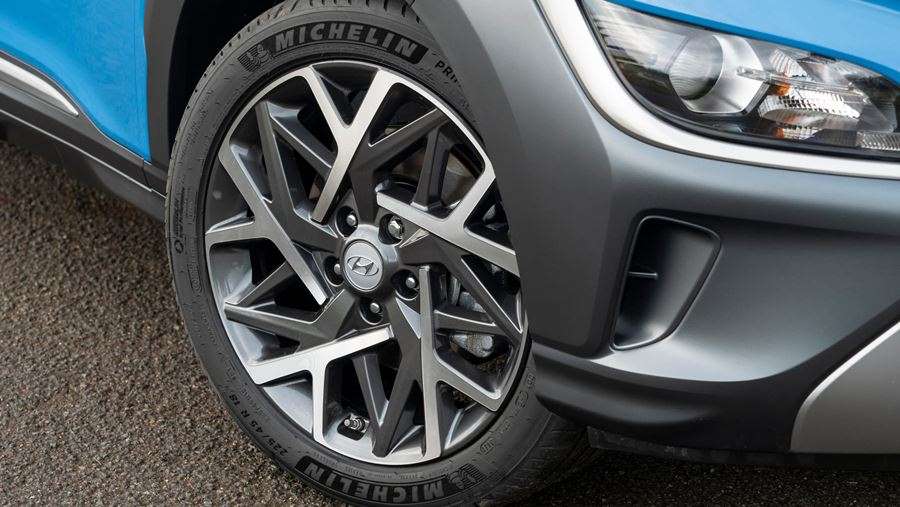
The same tech is also available as an option on the Kona’s 1.0-litre, three-cylinder turbocharged petrol engine - and it’s this powertrain that we’re driving here. The engine itself produces 118bhp, and is the same unit that is likely to appear in higher-end i20s later this year.
The hybrid system uses an integrated starter/generator and a small lithium-ion battery to give the combustion engine a boost when pulling away from rest. It also benefits, though, from Hyundai’s Intelligent Manual Transmission - a six-speed manual gearbox that has no physical connection between the clutch pedal and the clutch. This sensor-based solution means that the engine can be switched off when the car is cruising along - and then fired up again, thanks to the 48-volt hybrid tech, when required.
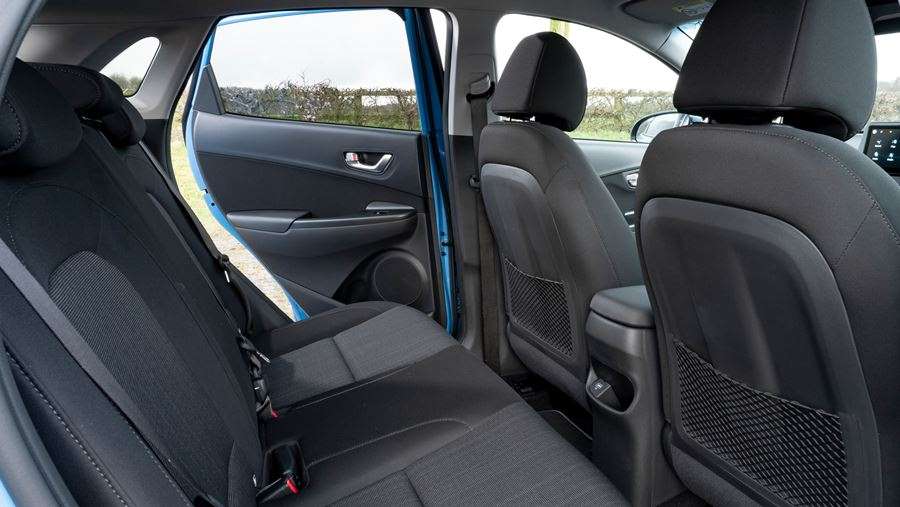
It’s a complex piece of engineering but in practice works extremely well. You won’t feel much extra shove when starting off but once you’re up and running, you’ll have to rely on the visual cues on the instrument panel - the rev-counter needle flicking up and down - to tell that the engine is being cut in and out. It’s incredibly smooth in its transition - astonishingly so when you think that you can be doing 70mph at the time.
The engine has enough power to cope with a car of the Kona’s size, but not quite enough to ever make it feel like it’s capable of really punchy performance. The 0-62mph dash takes a leisurely 11.9 seconds - making the electrified version of this engine slower than the non-hybrid edition in either manual or auto form. It’s more efficient, though, with claimed average economy of 46.3mpg, and based on our experience with the car, this should be achievable in everyday use.
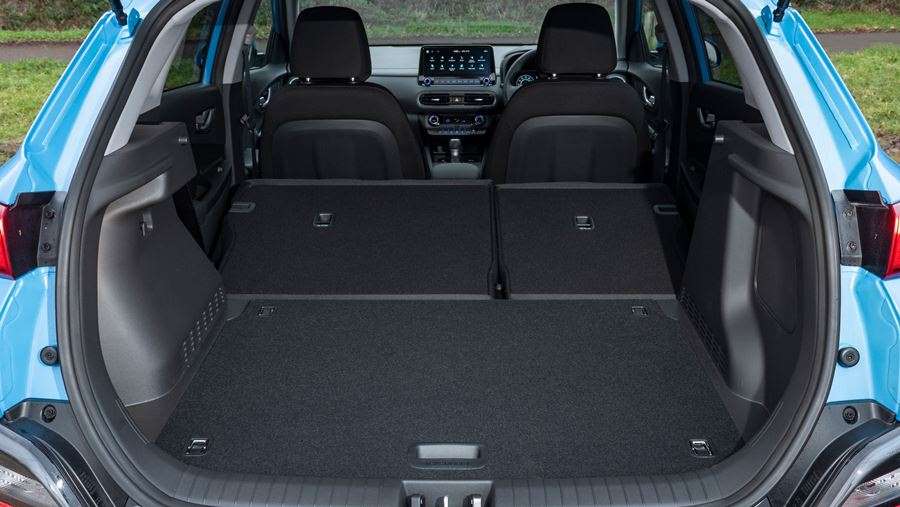
The Kona has also received tweaks to its chassis and suspension, and while they’re not enough to transform the car into a vehicle with real appeal for keen drivers, they do give the model a bit more dynamic polish. The most pleasing development of all is better bump absorption, making the Kona an effective tool on scarred urban roads, even on our Ultimate model’s 18-inch alloy wheels.
Body control feels a little tighter than before too, so while the inert steering and taller body still don’t really play ball and deliver enjoyment on twisty roads, the overall package feels like a more effective compromise than it did before. It’s a result, we’d like to think, of the UK testing instigated by Hyundai’s head of vehicle dynamics, ex-BMW M division man Albert Biermann.
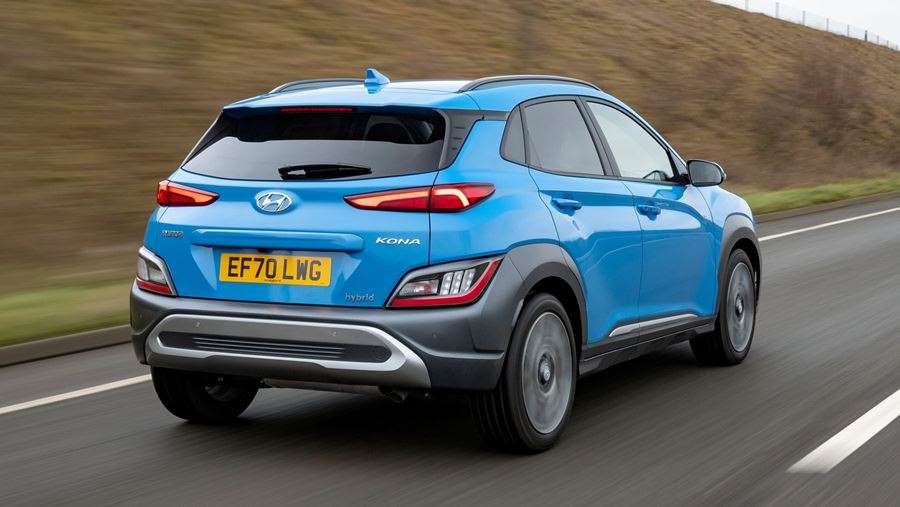
In the cabin the biggest upgrade comes in tech, thanks to a new 10.25-inch digital instrument cluster, as seen first in the all-new i20. It’s crisp and easy to use - an ideal companion, in fact, for the similarly sized infotainment system that comes as standard on this Ultimate trim level. It remains one of the best set-ups you’ll find in any vehicle, frankly, with clear graphics, a great interface and quick responses to inputs. Recent upgrades have improved its connectivity further, thanks to fresh functionality in Hyundai’s Bluelink phone application.
The rest of the cabin gets some new materials but they don’t do much to lift the overall experience. It’s not that it’s badly screwed together or lacking soft-touch fabrics in key areas; it’s just that the fascia is a sea of black, grey and dark grey plastic, with only the very occasional flash of chrome to brighten proceedings.
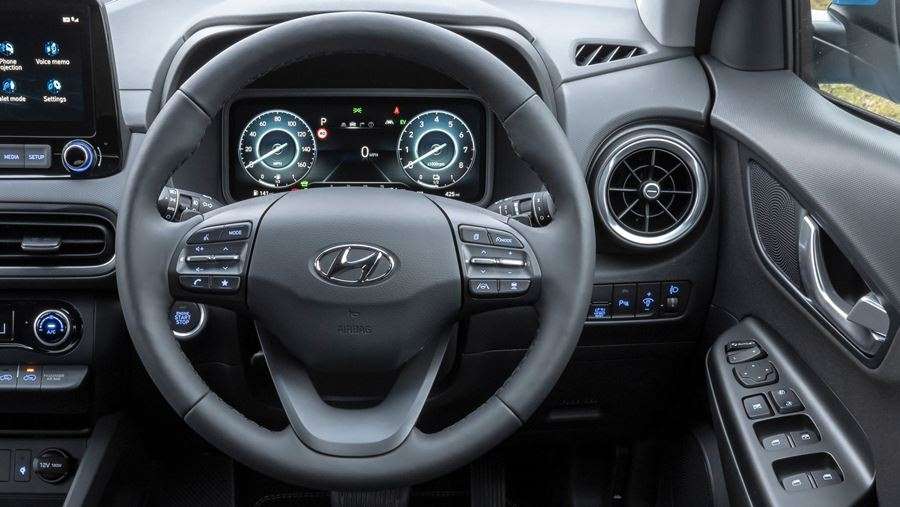
Nor, it must be said, has the facelift done anything to address one of the Kona’s key weaknesses: rear packaging. Two adults can fit in there, even behind a couple of six-footers, but once in place, they’re unlikely to thank you for anything approaching a long journey.
The boot remains pretty unimpressive too - not helped, still, by a relatively high floor that’s designed to accommodate the circuitry of the hybrid and pure-electric editions. The Kona’s capacity is 374 litres, so it isn’t going to challenge the Renault Captur, Peugeot 2008 or Ford Puma on practicality.
Source: autoexpress.co.uk
What is the actual fuel consumption at maximum speeds?
When the driver has a heavy foot, the fuel sellers rub their hands contentedly. Fuel consumption in cars running on highways at full throttle is dizzying.
To reduce fuel consumption, car manufacturers use various tricks like downsizing, reducing the number of cylinders, using lighter materials. Basically, all this brings the expected results. For example, diesel engines are increasingly consuming almost 4 l / 100 km. However, it should be noted that the lowest consumption is achieved in ideal conditions, where none of the tested cars accelerated over 120 km / h.
However, in practice it is completely different. The more often you press the accelerator pedal to the floor, the higher the fuel consumption. So, all the manufacturer's data goes to the sky, even if the car is driven at the allowed speed. Cars have to fight air resistance and rolling. Vehicle weight also plays a big role.
It’s good to remember that the faster you drive, the higher the air resistance. This is important because the maximum values of power and speed increase with each new model. Today, in compact engines with a mediocre engine, you can easily drive 200 km / h.
AutoBild reporters selected 10 cars that they chased with the left lane of a German highway with the right pedal pressed to the floor. See below how greedy the tested cars were.
Mercedes G 500
Mercedes has created a real monster. The G 500 is equipped with a powerful 387 hp engine and 530 Nm of torque. Under full throttle, it consumed 62.3 liters per 100 kilometers
BMW M5
The result achieved in the BMW M5 is 62 l / 100 km
Audi A8
The trip computer reports that the fuel consumption is 32.9 l / 100 km. But don't trust him. In fact, the Audi A8 consumes 36.6 l / 100 km
BMW X5
If the driver has a heavy leg, the X5 50i will consume more than 49 liters of fuel per 100 km on the motorway
Fiat Ducato
With the gas pressed to the floor, the Ducato consumes 17.9 l / 100 km
Jaguar XFR-S
If you were to drive at top speed all the time, the fuel in Jaguar’s tank would only last 112 kilometers. The Jaguar XFR-S consumes 62.5 liters of gasoline per 100 km at top speed
Golf 7
The VW Golf 2.0 TDI consumed over 14.5 l / 100 km of diesel while driving at full throttle.
Mazda 3
The two-liter, four-cylinder Mazda 3 engine burns 22.2 liters of gasoline in the exhaust after 100 km
Škoda Octavia 1.2 TSI
The 105 hp Škoda Octavia 1.2 TSI consumed 13.4 l / 100 km in the test
If you really want to save fuel, take your foot off the accelerator pedal. Without this, no technical trick used by car manufacturers will help reduce fuel consumption.

